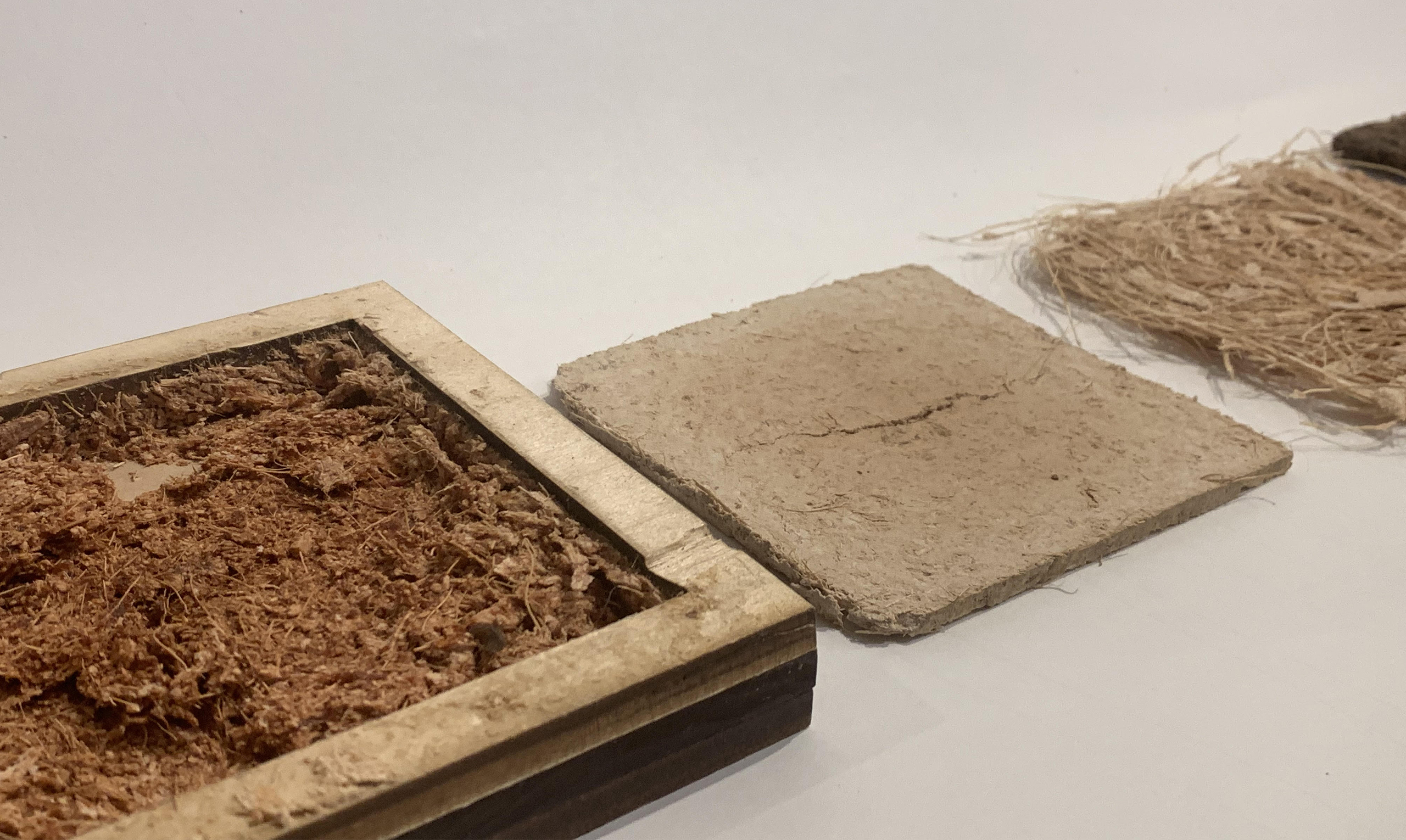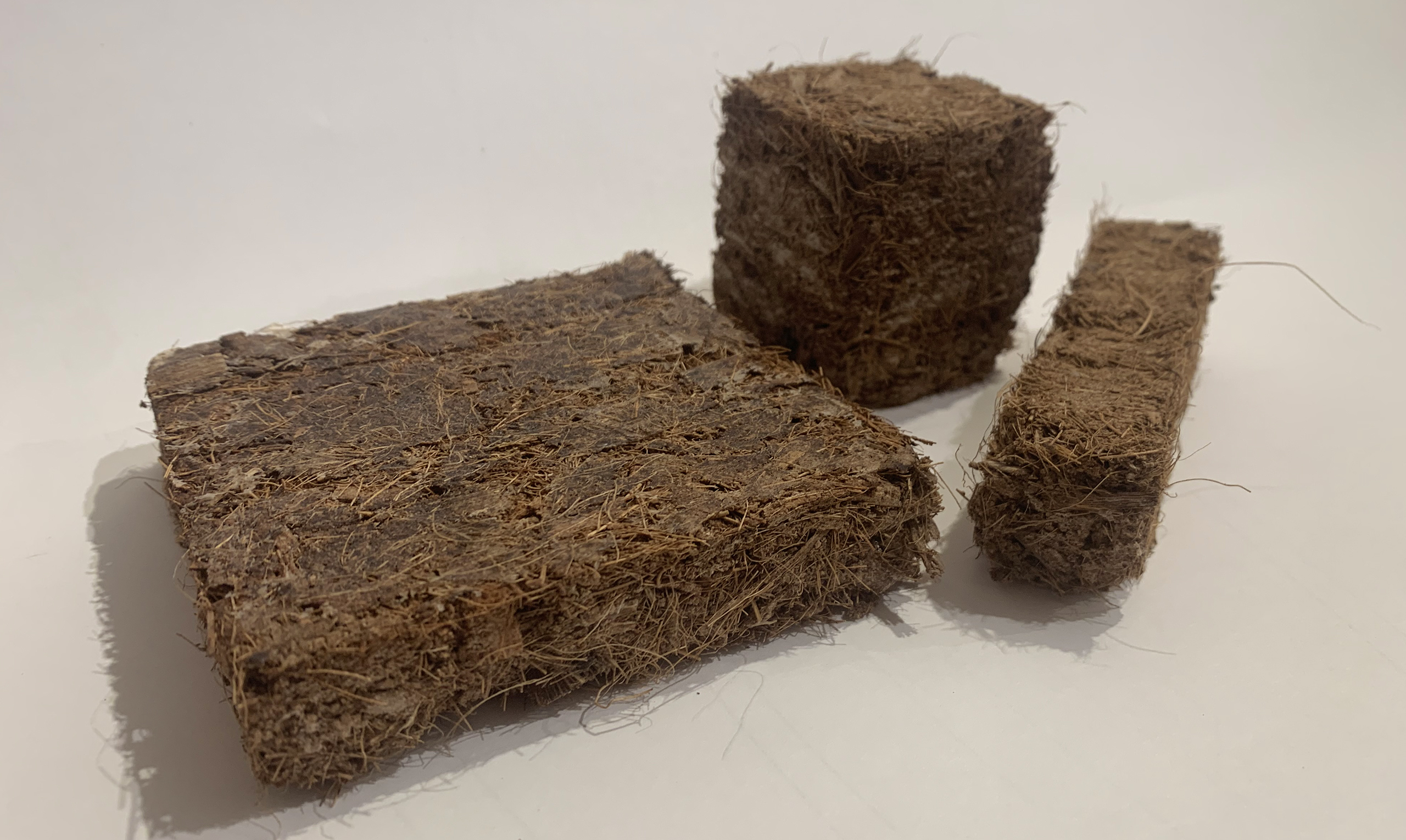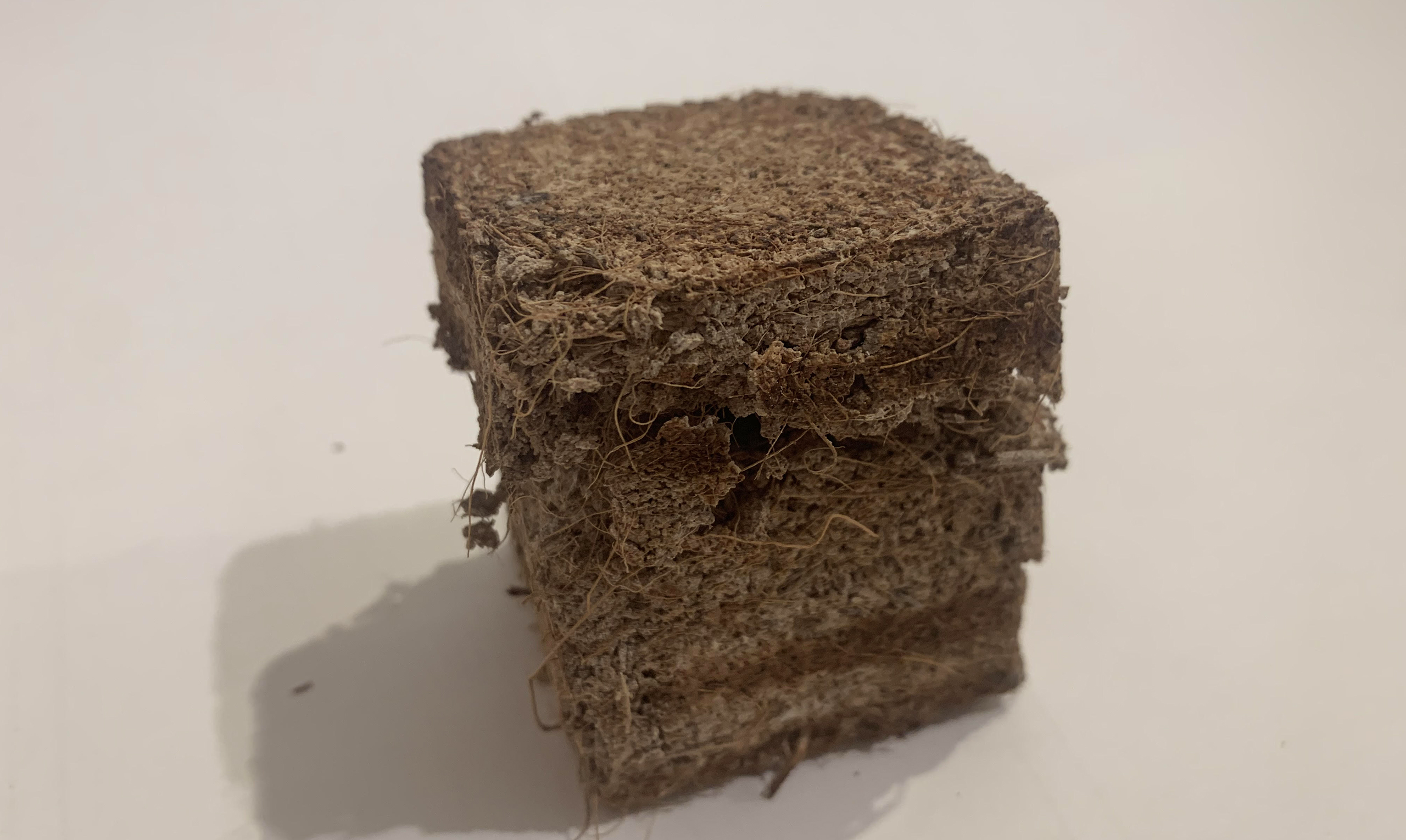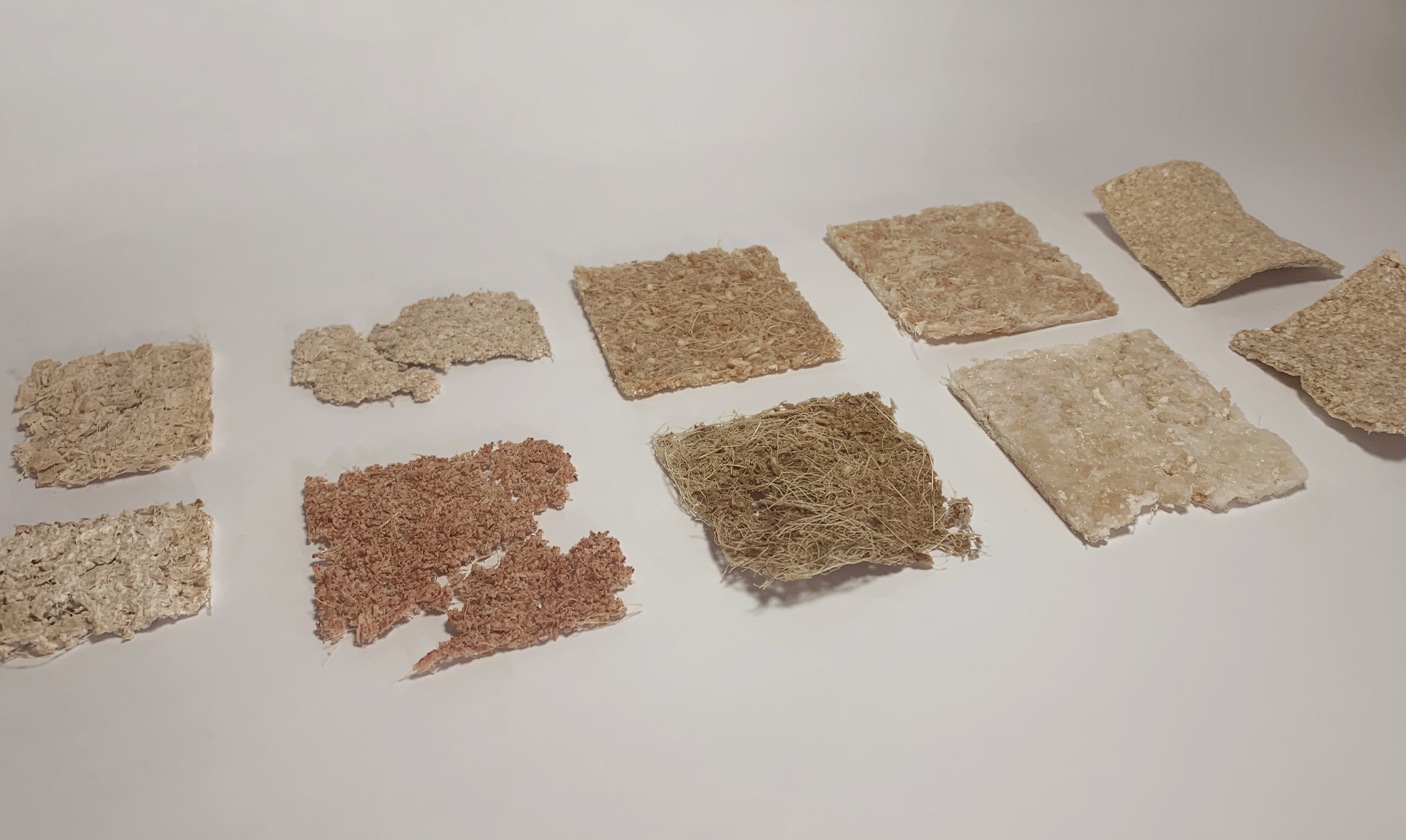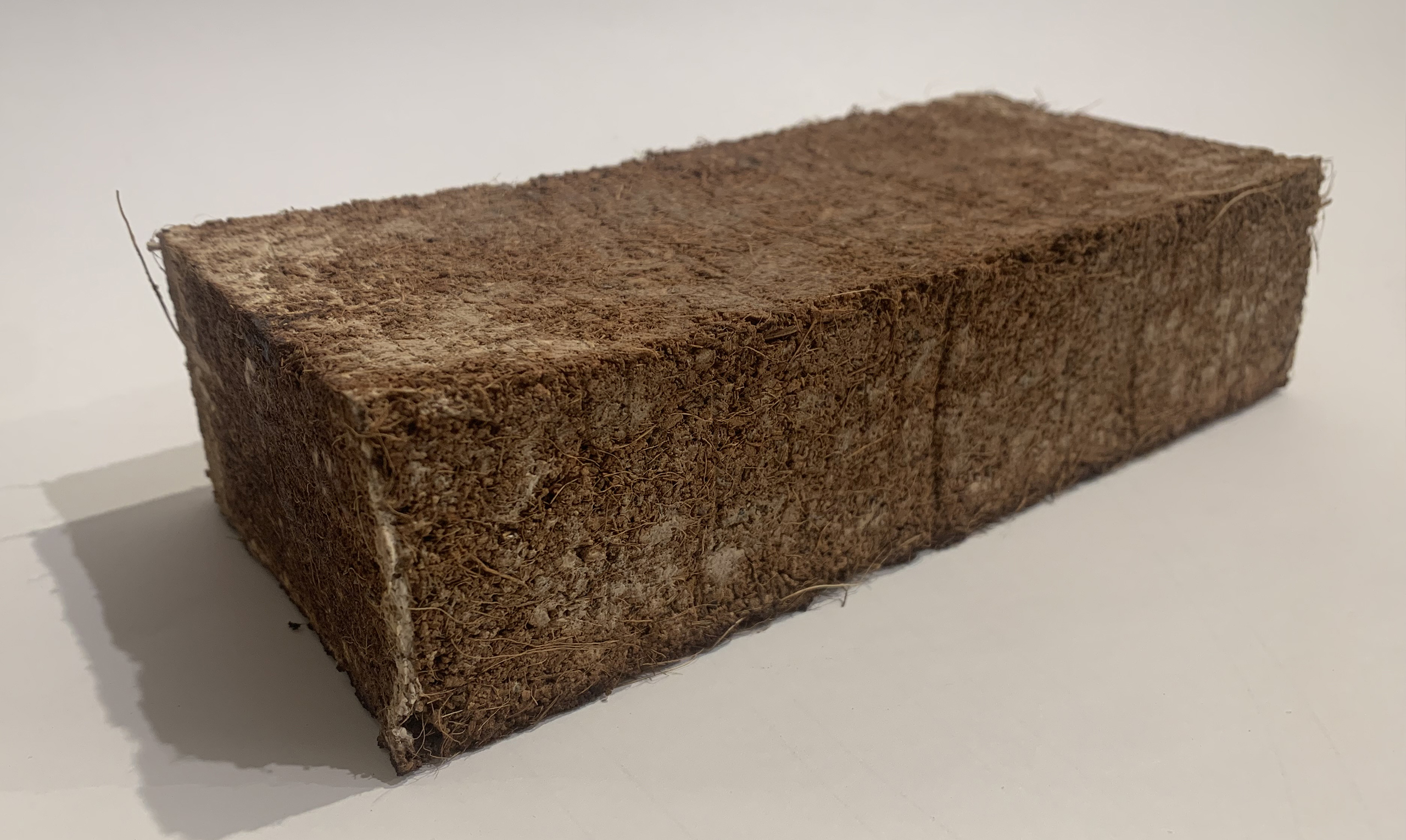In Sinhala, the coconut tree is referred to as ‘Kapruka,’ meaning the tree of life, as every part can be used. At the peak of the climate crisis where architectural designers must take responsibility for the overwhelming consequences synthetic building materials like concrete, have had on the environment, it is imperative to begin a shift towards natural materials. Intended for use in tropical countries like Sri Lanka, this exploration envisions the coconut husk as a potential innovative biomaterial that is biodegradable, less chemically intensive, and emits lower carbon throughout its lifecycle than conventional synthetic materials.
By conducting a series of experiments and tests, the coconut husk has shown promise as a new biomaterial when bound by an adhesive mix of water, cornstarch, and vinegar at a 3:1:⅓ ratio. Preliminary experiments included the use of industrial hydraulic hot presses for a controlled application of heat and pressure, regulating most experiments around 70 degrees Celsius with a pressure of 200 Psi. This initial exploration worked towards creating a compressed brick, by understanding the material’s potential in compression rather than tension. Subsequent compression tests were also conducted revealing the material composition’s compressive strength of 0.28MPa, as a promising start to future explorations that would render the material comparative to other biomaterial bricks.
